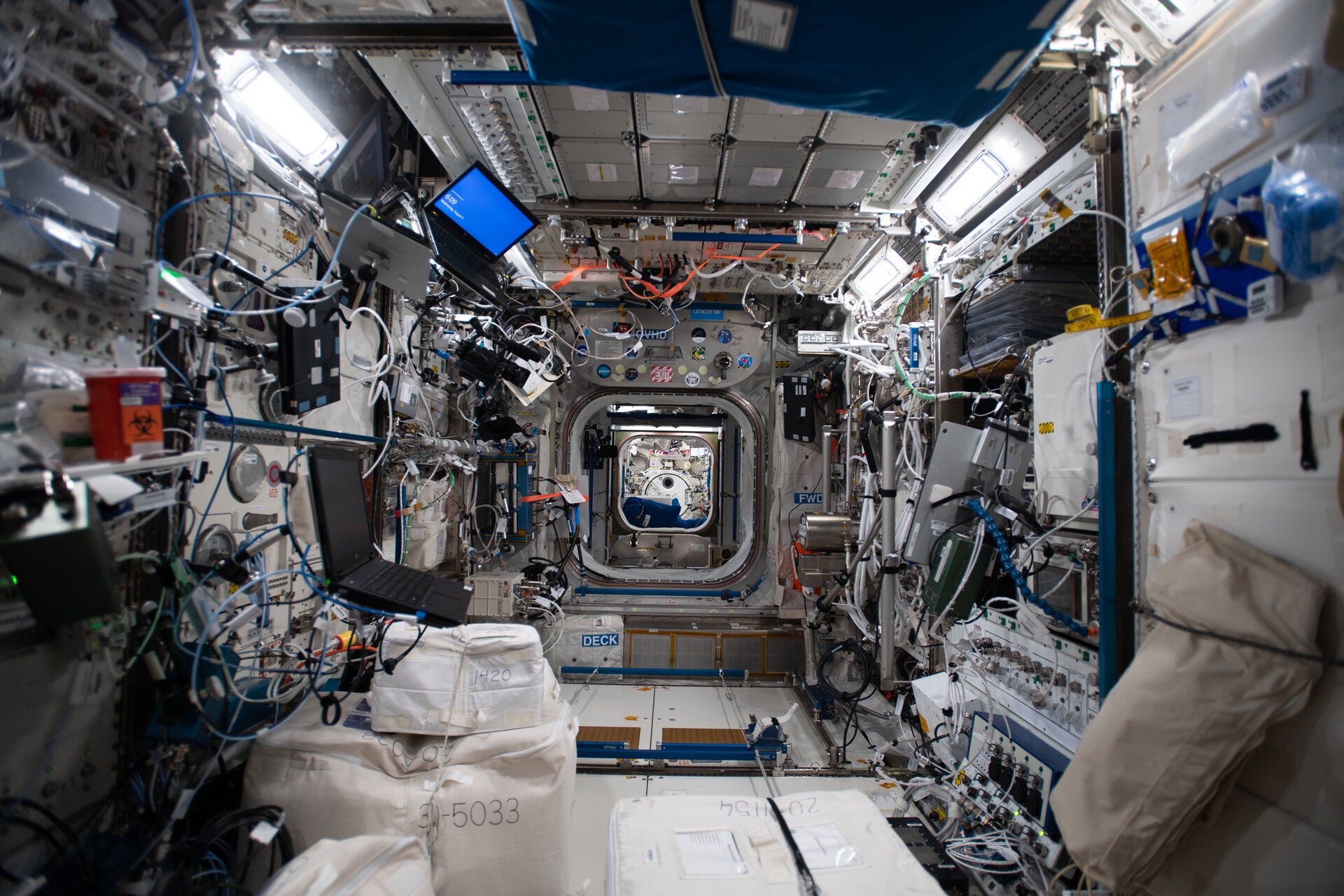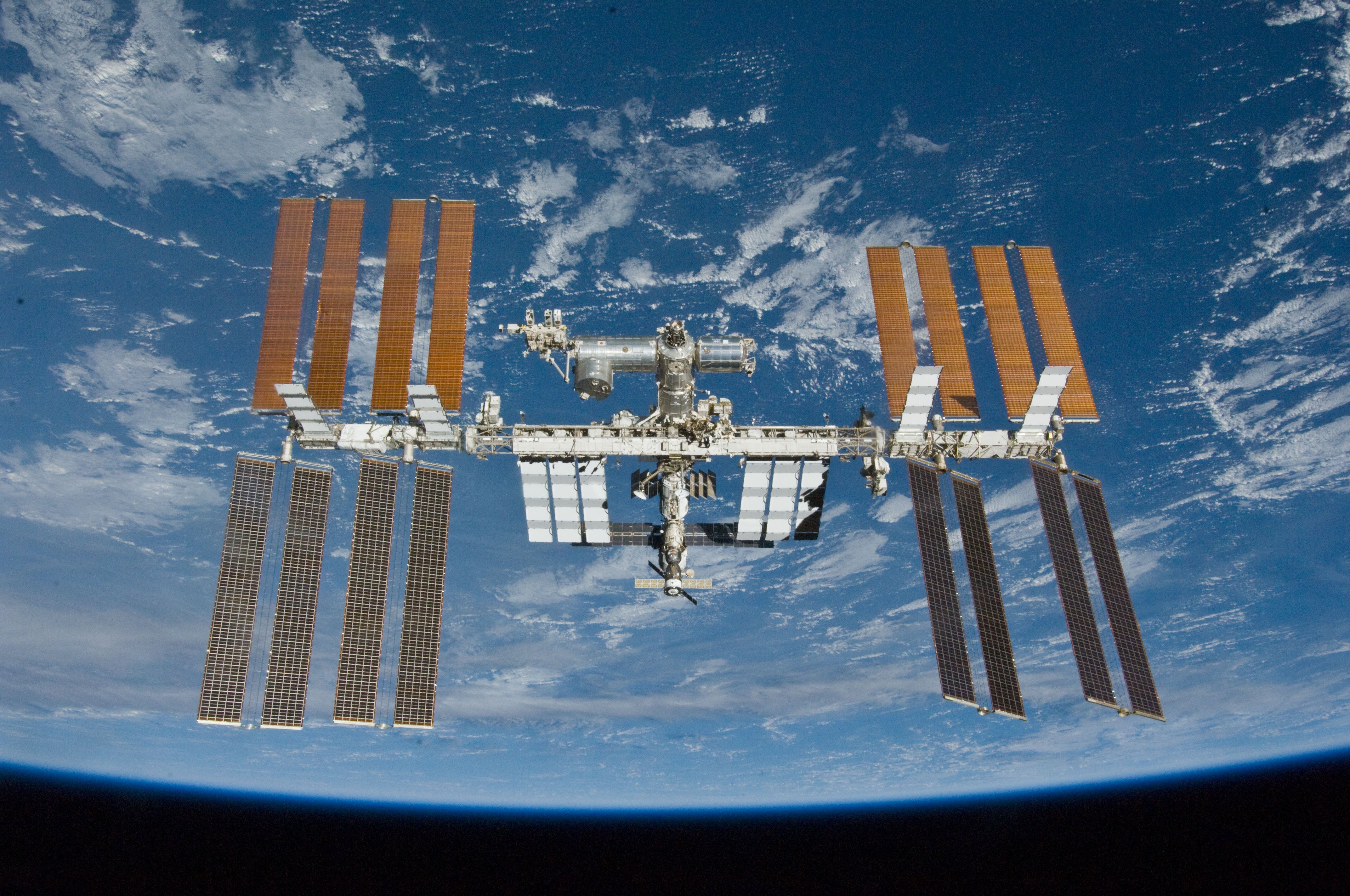
In science fiction, space stations often look shiny and pristine, the ultimate controlled environment cocooning humans from the harshness of space. But in reality, the International Space Station fills with dust. Not cosmic dust, but household dust: skin flakes, clothing lint — and toxic chemicals.
An analysis of samples taken from the International Space Station (ISS) has found that the dust onboard contains higher-than-average levels of several potentially harmful kinds of chemicals — including so-called “forever chemicals” — compared to dust in homes on Earth.
For some compounds, these levels are higher than ever reported in household dust. These include perfluorooctanoic acid (PFOA), a compound often found in non-stick and stain-resistant products, food packaging, and fire-fighting foam. On the space station, the level of PFOA was around 3.3 parts per million; in comparison, the highest level found in a 2008 survey of U.S. homes and daycare centers was about 2.0 parts per million.
The mix of chemicals found in the dust reflect the requirements of the space station’s “unique indoor environment,” the authors write in their study, published Aug. 8 in Environmental Science and Technology. Due to the potentially disastrous consequences of an onboard fire, “very careful attention is paid to flammability of ISS contents.” Some of the chemicals found are used as flame-retarding materials or treatments in onboard foams, webbing, and fabrics. And the high levels of PFOA may be due to the widespread use of waterproofing treatments which prevent microbes from growing onboard.
What’s in the dust?
Dust does not settle in microgravity — like the astronauts themselves, it floats around. But this doesn’t mean the astronauts can skip dusting chores. The astronauts need to regularly vacuum screens that cover the intakes of their air filters to clear them of large dust particles.
To study what the astronauts are breathing, Harrad and his colleagues analyzed the contents of ISS vacuum bags that were returned to Earth. The bags are filled with cabin dust: metal particles, lint from clothes, hair, skin flakes, and other debris. The research is part of an experiment called Divert Unwanted Space Trash (DUST) that looks at particles and their behavior in a microgravity environment.
Upon analyzing the dust, researchers found several types of organic contaminants. (In chemistry, organic simply means that a compound contains carbon.)
These include organophosphate esters (OPEs) and brominated flame retardants (BFRs) — chemicals that are used to meet fire safety regulations for things like building insulation, furniture fabrics, carpets, and foams. OPEs and BFRs leech out of products over time, and studies have found that they can adversely affect children’s health.
The authors write that BFR levels onboard the ISS may rise because astronauts sometimes vacuum the wall panels and acoustic insulation. And foam is ubiquitous onboard the space station because it is used to pack and protect items from the violent shaking when they are delivered via rocket launch.

One surprise in the ISS dust was in the class of compounds called polychlorinated biphenyls (PCBs). PCBs can be found in old houses in windows, building sealants, and electrical equipment — but they were banned in the United States in 1979. What’s more, the particular types of PCBs found on the ISS are unusual and unexpected for indoor dust on Earth, the researchers say. They suspect it might have come from dyes and paint pigments used onboard.
The study also identified polycyclic aromatic hydrocarbons (PAHs), which are found in hydrocarbon fuels and are emitted from combustion processes; perfluoroalkyl substances (PFAS, more commonly known as forever chemicals) used in staining applications for clothing and other fabrics; and polybrominated diphenyl ethers (PBDEs), which may be from the use of inorganic flame retardants in webbing and fabrics.
The team also suspects that some chemicals found in ISS dust may come from plastic housings in items that astronauts bring with them for personal use, like MP3 players, cameras, and tablets — all of which can contain flame-retardant coatings.
Clearing the air
Although the air onboard the ISS is constantly filtered and recirculated several times per hour, researchers don’t know how many BFRs are removed in this process.
As for why there are high levels of chemicals on the ISS in the first place, it may partly have to do with the higher levels of ionizing radiation in orbit. The radiation ages materials on the space station faster, breaking plastic into micro and nano plastics that float in the microgravity environment.
The researchers say their work can help engineers in choosing less toxic materials in future spacecraft. “It may be possible to exclude many contaminant sources by careful material choices in the early stages of design and construction,” said Stuart Harrad, a study author and environmental chemist at the University of Birmingham, U.K., in a statement.









